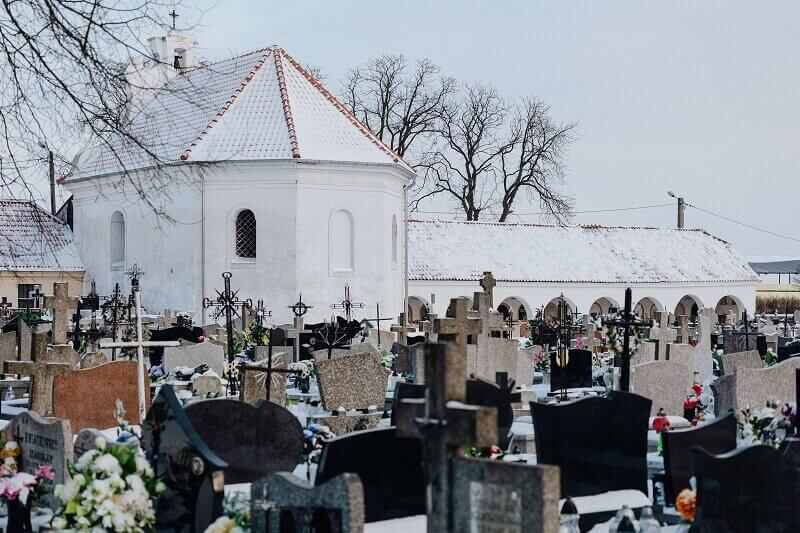
Reflecting on the Beauty of Mausoleum Designs
Have you ever taken a moment to admire the sheer beauty of a mausoleum? Far more than mere resting places, mausoleums represent a compelling mixture of art, culture, and architectural prowess. Each mausoleum tells a fascinating story, from the intricate carvings to the captivating statues. The cemeteries Daly City, CA, provide one prime example, with each structure serving as a monumental tribute to the lives lived. The aim of these buildings ultimately extends beyond their practical purpose: being a symbol of the beauty of life, love, and eternity. Understanding their designs can offer a deeper insight into the human desire to immortalize memory, a concept as old as time. This article aims to shed light on the hidden beauty of mausoleum designs and their profound impact on our perceptions of mortality.
The Artistry in Mausoleum Architecture
The artistry in mausoleum architecture is evident in the breathtaking designs adorned with ornate details, large columns, and beautiful sculptures. These buildings serve as an encapsulation of artistic taste, reflecting the design ethos of their era. They are not merely graves but depictions of pure craftsmanship and skill. Subtle elements of the architecture, such as the selection of materials, the design of the façade, or the intricate interior work, exhibit the depth of thought put into these grand structures. Each mausoleum design represents a unique blend of beauty, balance, and solemnity, creating a peaceful resting place that transcends time.
Cultural Significance of Mausoleum Designs
Mausoleum designs often carry profound cultural significance. They reflect local artistic trends and highlight cultural values and historical narratives. The architectural elements used, the symbols engraved, and even the layout of these structures can provide insight into cultural beliefs about death, the afterlife, and remembrance. For example, some cultures emphasize grandeur and luxury in mausoleum designs to honor the dead. In contrast, others prefer simplicity, focusing on serenity and the natural environment. Through these variations, mausoleum designs offer an understanding of how different societies perceive mortality and memory, making them a rich source of cultural exploration.
Immortalizing Memories through Mausoleums
Mausoleums are crucial in immortalizing memories, serving as tangible reflections of individuals’ lives and legacies. These structures beautifully encapsulate stories, achievements, and identities in their design, with each feature carefully chosen to represent the person memorialized. Often, personalized details are added, such as logos of social clubs, mementos from the person’s career, or symbols of shared values. These elements contribute to expressing personality and unique life experiences through architecture, making mausoleums more than just tombs. They become places of remembrance and celebration, continuously preserving the spirit of the departed in an essence of beauty and timelessness.
Unique Mausoleum Styles Across the Globe
Mausoleum designs vary globally, reflecting their respective cultures’ unique stylistic preferences and traditions. In Europe, you’ll find grand Gothic mausoleums with soaring arches and intricate carvings, while in Asia, there’s an intriguing mix of elaborate designs and minimalistic styles, often imbued with spiritual symbolism. In America, mausoleums range from classical Greco-Roman architecture to modernist structures. These varied styles epitomize the diversity of human expression and the universal aspiration to honor the dead while providing a captivating insight into the world’s architectural heritage. Reflecting on these distinct designs deepens our appreciation of this beautiful aspect of human culture.
The Role of Symmetry and Geometry in Mausoleum Designs
Symmetry and geometry play a vital role in mausoleum designs. These design principles create balance, generate visual harmony, and evoke a sense of calm and serenity, fitting for a final resting place. Symmetrical structures convey order and stability, providing a comforting consistency that’s visually pleasing. Meanwhile, geometrical elements add depth and fascination to the design. Using shapes such as circles, squares, and triangles can carry significant symbolism, representing concepts like eternity, stability, and the trinity of life. These elements collectively enhance the aesthetic appeal of mausoleums while adding layers of meaning to their design.
In conclusion, a closer look at the beauty of mausoleum designs enriches our understanding of cultural values, architectural trends, and the universal human experience. These grand structures, such as those found in the cemeteries Daly City, CA, serve as remarkable symbols of respect, memory, and eternal love. Engaging with The Italian Cemetery allows us to appreciate these architectural gems and explore a significant part of our shared cultural heritage. We cordially invite you to pay a visit, reflect on the mesmerizing beauty of our mausoleums, and celebrate the rich tapestry of life they encapsulate.
